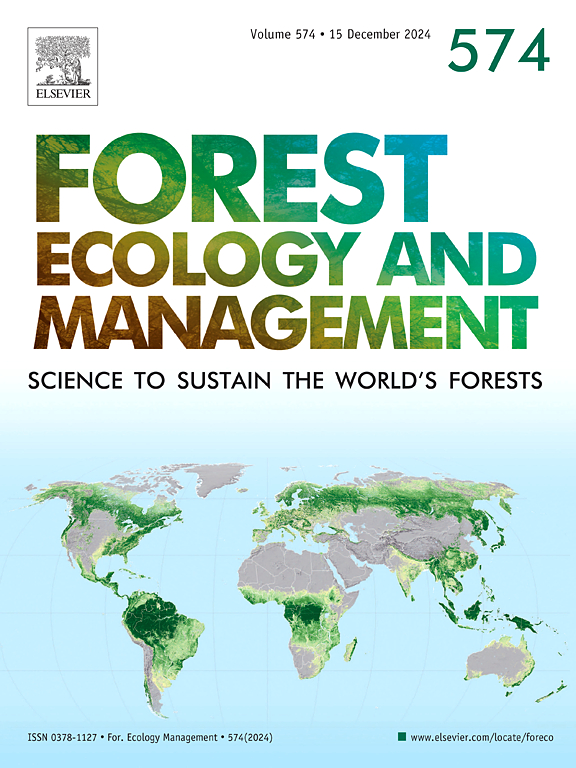Do soil enzymes respond to silvicultural management?
IF 3.7
2区 农林科学
Q1 FORESTRY
引用次数: 0
Abstract
Soil enzymes mediate important soil processes and have been used to indicate changes due to management practices. In forest ecosystems, rotation length challenges the ability to assess the impacts of silvicultural practices on soil enzymes, which has led to these effects being understudied. The fluorometric microplate 4-methylumbelliferyl (MUF) enzyme assay using dry soil samples offers a promising method to explore soil enzyme activities over large time scales. Here, we investigated the impacts of silvicultural practices on soil enzymes, β-glucosidase (BG), β-glucosaminidase (NAG), and acid-phosphatase (AP), using the MUF enzymes assay method. We sampled across an extensive southeastern U.S. experimental pine plantation network which included the most common silvicultural practices - herbicide, thinning, fertilization, and intensification of fertilization (Intensity). We selected 264 plots and collected soil samples at 0–10, 10–20, 20–50, and 50–100 cm depth. Soil enzyme activities were extremely low below the 20 cm depth. Soil enzyme activities were spatially variable across soil depth and soil Orders, but did not show seasonal or other temporal variation. Soil pH, soil organic carbon, total nitrogen, and permanganate oxidizable carbon correlated positively with all enzymes analyzed at 0–10 and 10–20 cm depths and, in general, edaphic properties had higher importance in explaining enzyme variability than climate or stand properties. Compared to control plots (untreated), at the 0–10 cm depth, fertilization suppressed BG, NAG, and AP activities. Among managed forests, sites under Intensity management, at the 0–10 cm depth, showed higher NAG activity and NAG:AP ratio but lower BG:NAG. AP responded negatively to the frequency and doses of fertilization applied (Intensity treatment). The same trend was observed for BG, but it depended on how enzyme activity was expressed, particularly in relation to soil organic matter (SOM) content. Results from this study indicate that soil enzymes can be used to monitor impacts of silvicultural practices, but their effectiveness relies upon soil depth sampled, how their activity is expressed, and the choice of specific enzymes based on monitoring goals.
求助全文
约1分钟内获得全文
求助全文
来源期刊

Forest Ecology and Management
农林科学-林学
CiteScore
7.50
自引率
10.80%
发文量
665
审稿时长
39 days
期刊介绍:
Forest Ecology and Management publishes scientific articles linking forest ecology with forest management, focusing on the application of biological, ecological and social knowledge to the management and conservation of plantations and natural forests. The scope of the journal includes all forest ecosystems of the world.
A peer-review process ensures the quality and international interest of the manuscripts accepted for publication. The journal encourages communication between scientists in disparate fields who share a common interest in ecology and forest management, bridging the gap between research workers and forest managers.
We encourage submission of papers that will have the strongest interest and value to the Journal''s international readership. Some key features of papers with strong interest include:
1. Clear connections between the ecology and management of forests;
2. Novel ideas or approaches to important challenges in forest ecology and management;
3. Studies that address a population of interest beyond the scale of single research sites, Three key points in the design of forest experiments, Forest Ecology and Management 255 (2008) 2022-2023);
4. Review Articles on timely, important topics. Authors are welcome to contact one of the editors to discuss the suitability of a potential review manuscript.
The Journal encourages proposals for special issues examining important areas of forest ecology and management. Potential guest editors should contact any of the Editors to begin discussions about topics, potential papers, and other details.
 求助内容:
求助内容: 应助结果提醒方式:
应助结果提醒方式:


